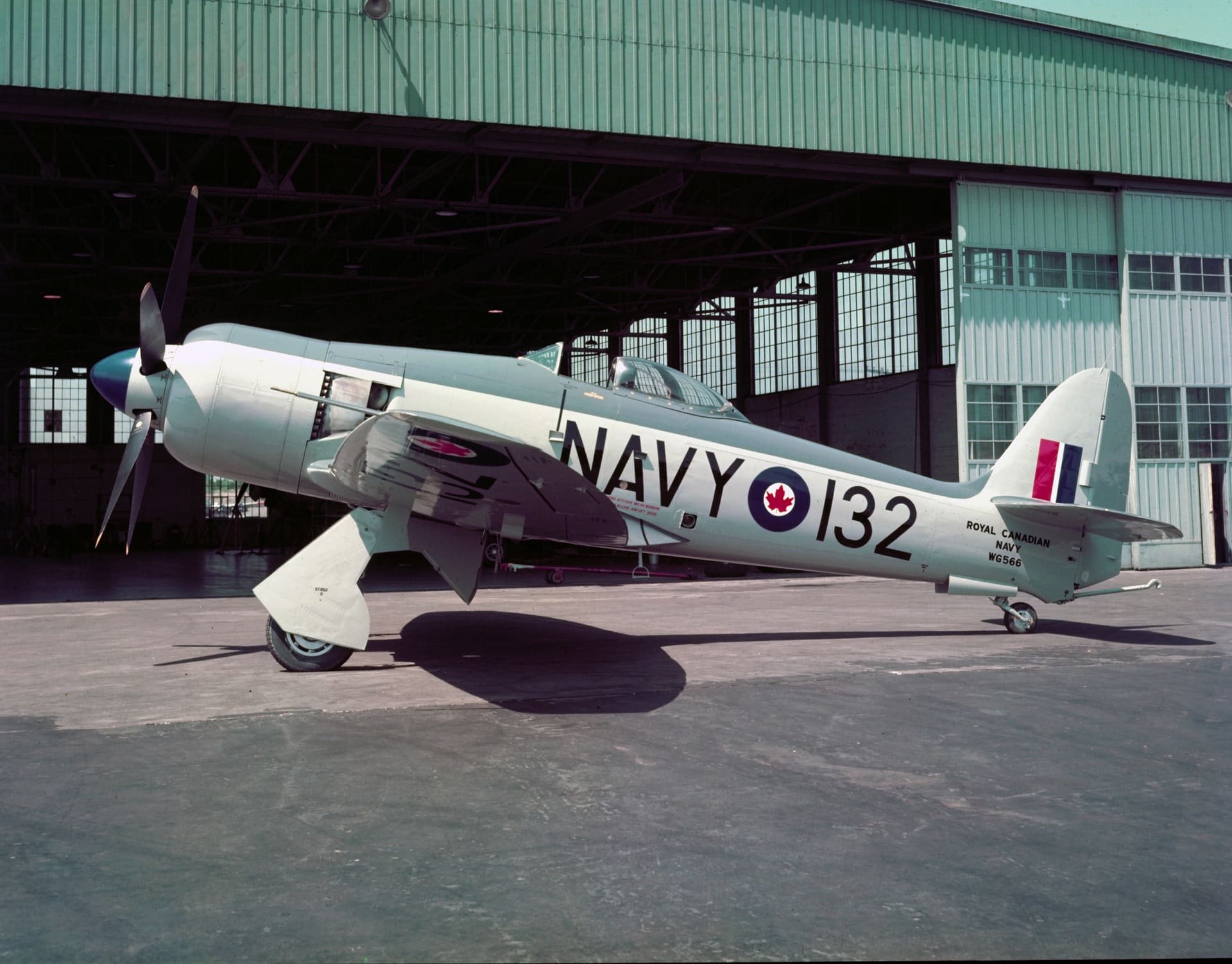The Hawker Sea Fury is a British fighter aircraft developed in the late 1940s primarily for the Royal Navy's Fleet Air Arm. It was one of the last piston-engine fighter aircraft to serve with the Royal Navy, as well as other air forces, before the widespread adoption of jet-powered aircraft. The Sea Fury was powered by a Bristol Centaurus radial engine, giving it impressive speed and agility and was capable of landing on aircraft carriers. It was heavily armed, typically carrying four 20mm Hispano cannons and rockets or bombs. The Sea Fury saw combat during the Korean War, where it proved to be a formidable opponent against enemy aircraft. Known for its ruggedness and superb handling characteristics, the Sea Fury remains a popular choice among warbird enthusiasts and airshow performers.
General characteristics
- Crew: 1
- Length: 10.6 m (34.75 ft)
- Wingspan: 11.7 m (38.33 ft)
- Height: 4.9 m (16.1 ft)
- Empty weight: 4,190 kg (9,240 lb)
- Maximum takeoff weight: 5,670 kg (12,500 lb)
- Powerplant: 1 × Bristol Centaurus XVIIC 18-cylinder radial engine, 2,480 hp
Performance
- Maximum speed: 740 km/h (400 kts)
- Range: 1,127 km (609 nmi)
- Service ceiling: 10,900 m (35,800 ft)
- Rate of climb: 1,270 m/min (4,170 ft/min)
Armament
- Guns: 4 × 20 mm Hispano Mk.V cannons
- Rockets: Up to 16× 76 mm (3 in) rockets or
- Bombs: Up to 908 kg (2,000 lb) of bombs


